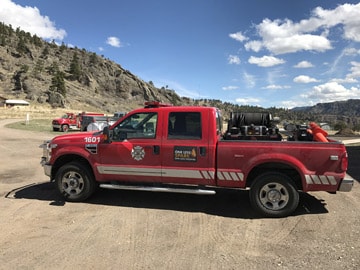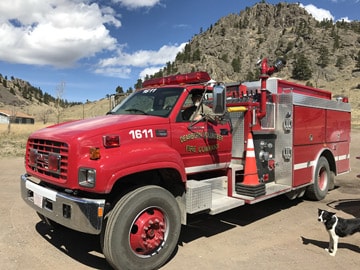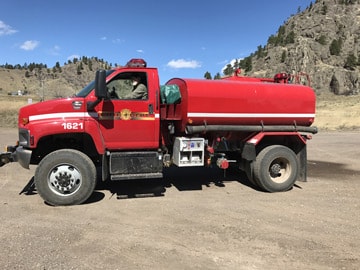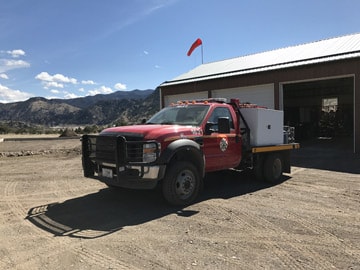Command 1601 – Initial Responder
- 2008 Ford 350 ton 4X4 pickup truck, diesel engine, automatic transmission
- Lights, siren and public address
- Fire suppression – 100 gal. water, 15 gals foam, 20 GPM ultra-high pressure hose/nozzle
- Medical trauma kit
- Personal protection for water rescue
- Landing zone lighting kit
- Cones and diamond sign for traffic control
Engine 1611 – Structure Fire
- 1999 Chevrolet 7500 4X2, gasoline engine, 5 speed manual transmission
- Lights, siren and public address
- Fire suppression – 1000 gallons water, 25 gallons foam, 750 GPM Pump
- 6” drafting hose
- 2 1/2” and 1 1/2” hoses
- Ladders for rescue and fire suppression
- Chain Saws
- Hand tools
- Cribbing for stabilizing vehicles
- Cones and diamond sign for traffic control
- Generator for operating saws
1631 – Brush/Wildland Fire
- 2007 and 2009 Ford 550 gasoline engine, automatic transmission
- Lights and sirens
- Fire suppression – 400/500 gallons of water, 75 GPM pump, 5 gallons foam
- Floating pump – high pressure 75 GPM
- 1 1/2 “ drafting hose
- 1” and 1 1/2” hose
- Hand tools
- Self Contained Breathing Apparatus
1632 – Brush/Wildland Fire
- 2007 and 2009 Ford 550 gasoline engine, automatic transmission
- Lights and sirens
- Fire suppression – 400/500 gallons of water, 75 GPM pump, 5 gallons foam
- Floating pump – high pressure 75 GPM
- 1 1/2 “ drafting hose
- 1” and 1 1/2” hose
- Hand tools
- Self Contained Breathing Apparatus
NEW Engine 1612
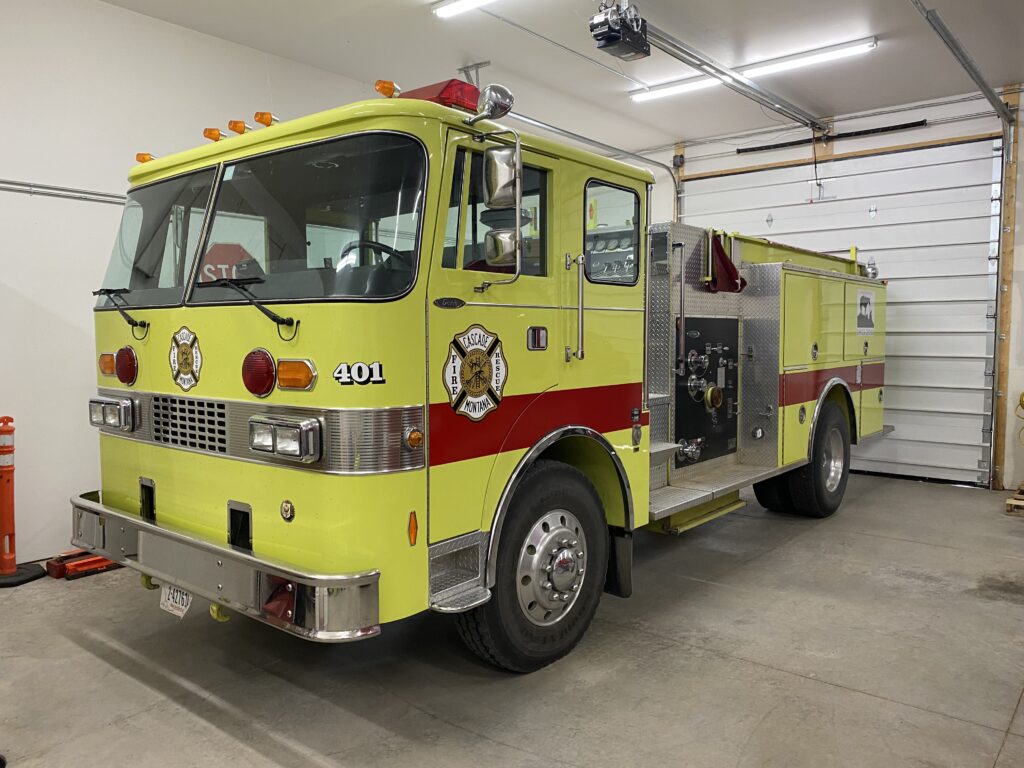
1989 Pierce 4X4 – Structure Fire
- 1989 Pierce Type I
- Lights, siren and public address
- Diesel Engine
- Automatic Transmission
- PTO Water Pump
- 750 Gallon Tank
- 28′ Ladder
- Power Pack w LED Scene Lights
- 2 x 1 1/2″ Lateral pre-connect hoses
- 2 1/2″ rear discharge
Vehicle Maintenance
From 2012 through 2016 Dearborn Fire has averaged 38 events, resulting in 330 firefighter hours annually. Included in the events is an average of 17 mutual aid requests per year.
Most of these events happen in the Wildland Urban Interface. Most people would describe our response area as primitive forested land. Rough roads and no roads are encountered as we respond to structure and woodland fires. Because of the operating environment, our vehicles are starting to require more and more repairs because of the harsh conditions. In 2012 our vehicle repair budget was $1,500 and in fiscal 2016 it was $10,000.
The other limitation we have is being able to respond to structure fires in remote parts of our Fire Service Area with vehicles that are configured for the rough country (4X4 plus 750 gallons of water). Our plan is to purchase a used vehicle in the future that will be able to carry water, equipment and personnel that can be effective during structure fire suppression in these remote areas.
